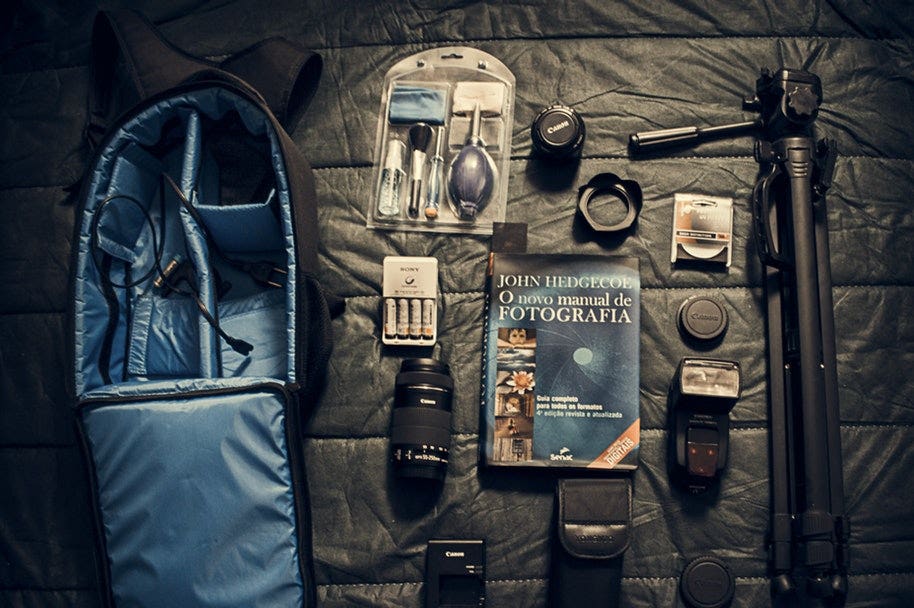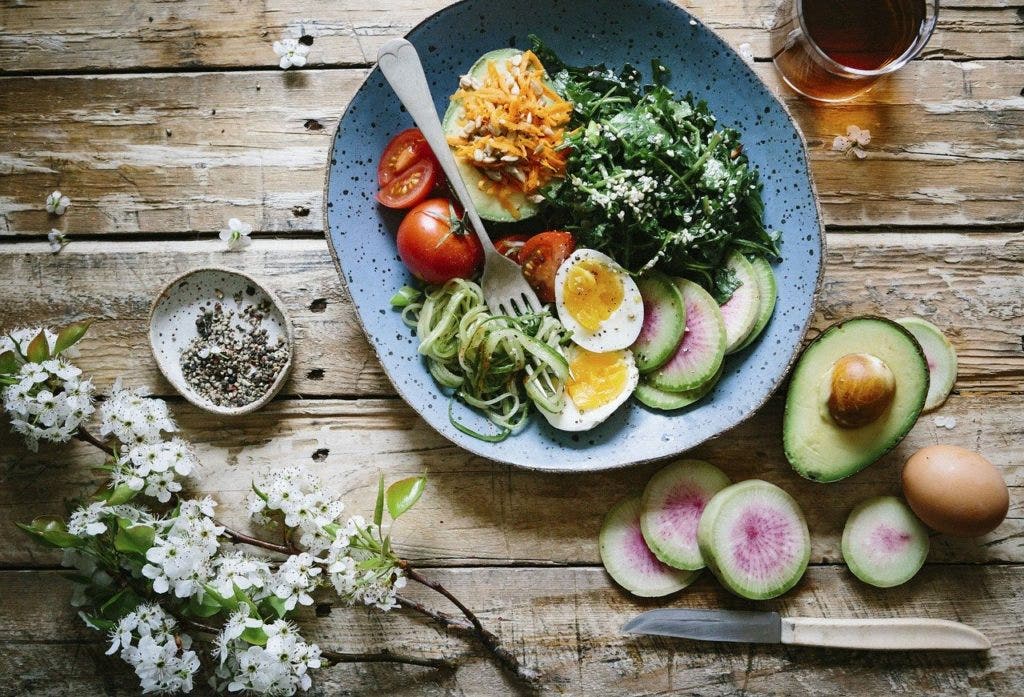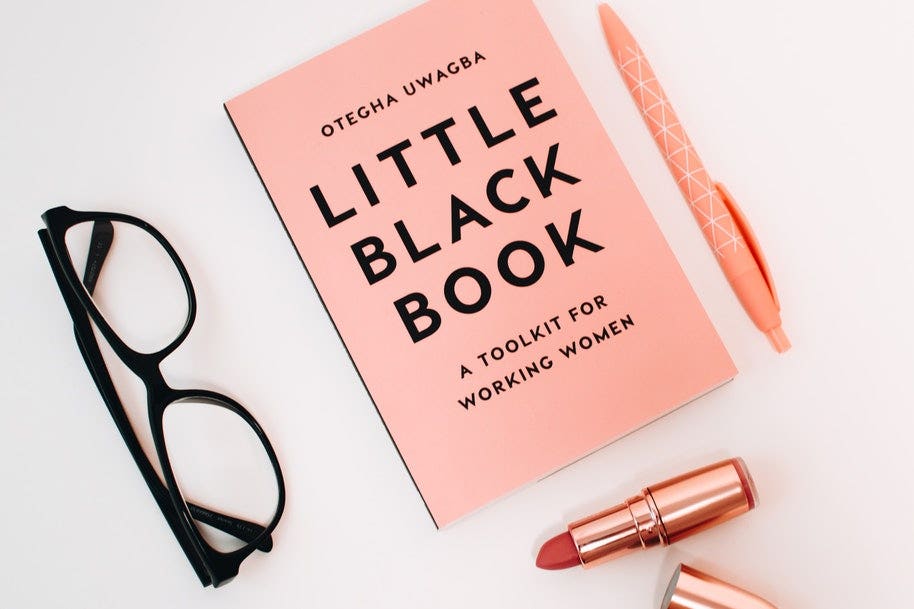
In the past decade, the range of options for career photographers has surged, thanks to the increasing popularity of online platforms such as Instagram and Pinterest for marketing and blogging.
Flat lay photography is a particular type of photography that is rising in prominence, with its “organised chaos” effect and its ability to capture a unique angle of everyday items.
In this post, we’ll take a look at what flat lay photography is, the perfect flat lay setup, and how to achieve a stellar flat lay shot.
What is flat lay photography?
A flat lay photo provides a visually-striking birds-eye perspective of items on a flat or textured surface.
If that sounds familiar, it’s because flat lays are used by everyone from travel bloggers capturing their luggage to restaurants photographing their dishes from above. You’ll find them on blogs, social media, and even in magazines, catalogues, and newspapers.

Your flat lay photography setup
To start: Your flat lay photography kit
You don’t need a lot to start creating flat lay photos. You can shoot flat lay compositions with everyday items around the home, a window for natural light, and your smartphone.
But if you want to get serious - or perhaps even professional - with flat lay photography, you may want to start with better gear.
At a minimum, you’ll want a quality camera. On top of this, your flat lay setup might include:
- A tripod with a 90-degree tilt
- A white reflector with a stand
- An LED light with a stand
- A backdrop in a neutral colour (such as simple craft sheets).
Below, we’ll take a look at why these particular items might come in handy in flat lay photography.
Your flat lay lighting setup
Natural light is most often the best choice for flat lay photography (as it commonly is with any photography). Morning light, in particular, is famous for its soft, natural look, which will help you achieve better white balance in your shots.
When you’re positioning a flat lay near a window or outdoors, see where the shadows fall and how strong they are.
Sometimes shadows accentuate the texture and add great effect to your photos; but more often, you may want your photos as free of shadows as possible.
For these times, it’s best to shoot on cloudy days or on the shadier side of your house. Alternatively, you can use a reflector or a white board to reflect light back into the shadows to create an evenly lit photo.
Keep the background simple

Trending popular flat lays are light and bright, with plenty of white space. The simpler your background, the crisper and cleaner your image appears.
Alternatively, you can portray pale items against a darker background. Whatever you choose, a neutral background gives you a great starting point for your composition.
Photographers may use marble, light wood, wicker, bed sheets, or large sheets of paper to create a backdrop.
Stick to one colour

The best Instagram feeds consistently stick to one colour palette. A flat lay with too many colours quickly becomes overwhelming and distracting rather than cohesive.
Instead, find two to three colours that complement one another and use props with these elements.
Since black and white are neutral shades, there’s no harm in throwing in black or white props with any colour palette.
Start off small
With flat lay photography, it’s a good idea to build on your flat lay, taking photos as you go. White space is always desirable, so start with minimal props and take photos before you add another element.
This gives you enough options in post-production to help you get the perfect look you were going for.
Pick a focus item

Your flat lay should have one hero item that you can draw the viewer’s eye to. When you’re setting up your flat lay, place your hero item first - usually in the middle of the frame - and surround it with other props.
Get high for the shot
The point of a flat lay is to give a unique perspective from above. You can do this by standing over your composition - gain extra height by standing on a chair or a ladder. Your camera should be parallel to the ground so you’re shooting directly above the flat lay.
While it’s perfectly fine to stand over your subject, a tripod with a 90-degree tilt can help you perfect your angles and perspective. It may even eliminate issues with shadows falling on your frame.
Propping your camera on a tripod also means you have your hands free to rearrange the props.
Are you ready to embrace flat lay photography?
Just as with any type of photography, your flat lay photography skills will improve with time and practice. If you’ve mastered the basics of photography and composition, you only need to learn how to build your flat lay to produce the best results.
Ready to boost your photography know-how? Brush up on your other photography skills today with our vast range of tips and advice on the Camera House blog.
